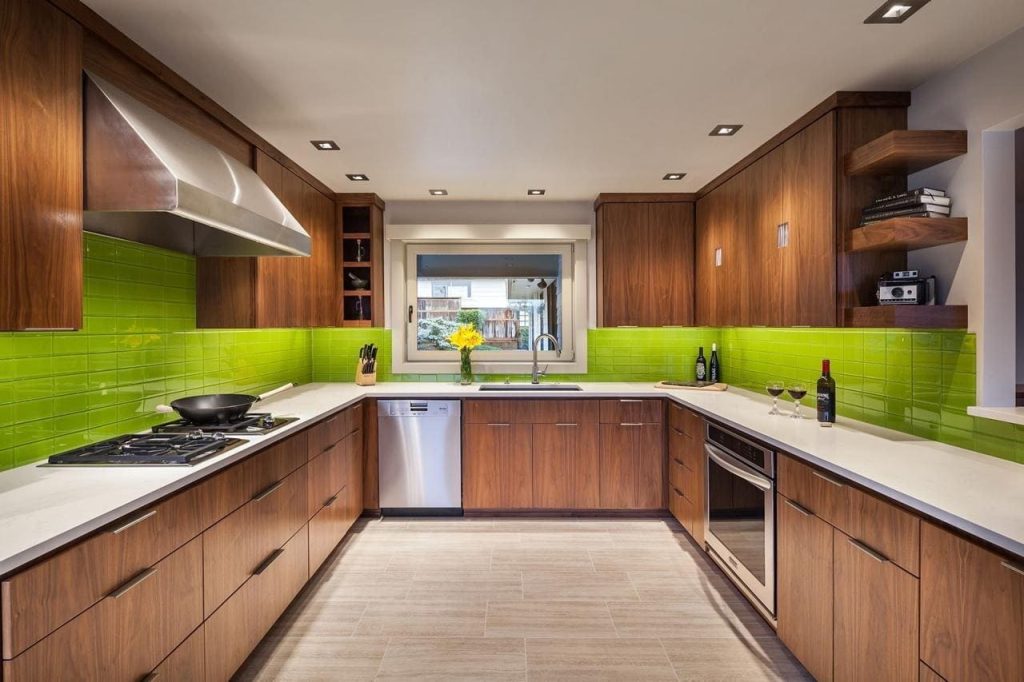The Art of Modular Kitchen Design
Introduction
The kitchen is the heart of any home, and a well-designed kitchen can make a world of difference in your cooking and dining experience. Modular kitchens, known for their sleek designs and efficient use of space, have become increasingly popular. In this guide, we’ll explore the key elements of modular kitchen design and offer practical tips to help you create a functional and stylish kitchen.
- Understanding Modular Kitchens
Modular kitchens are composed of pre-made cabinet parts that can be assembled in various configurations to suit your space and needs. This flexibility allows for efficient use of space and customization to match your personal style.

- Choosing the Right Layout
The layout of your kitchen is fundamental to its functionality. Here are some popular modular kitchen layouts:
L-Shaped Kitchen: Ideal for small to medium spaces, offering ample counter and storage space.
U-Shaped Kitchen: Provides plenty of workspace and storage, perfect for larger kitchens.
Galley Kitchen: Great for narrow spaces, with two parallel counters for efficient workflow.
Island Kitchen: Adds extra counter and storage space, ideal for open-plan homes.
- Maximizing Storage Solutions
Smart storage is a hallmark of modular kitchens. Consider these options:
Pull-Out Racks: Modular Kitchen Design Easy access to pots, pans, and spices.
Corner Units: Modular Kitchen Design Utilize otherwise wasted corner spaces.
Tall Units: Perfect for storing bulk items and appliances.
Drawer Systems: Modular Kitchen Design Organized storage for utensils and small items.
- Selecting Durable Materials
Your kitchen materials should be durable and easy to maintain. Popular choices include:
Cabinets: MDF with laminate, solid wood, or acrylic finishes.
Countertops: Granite, quartz, or laminate.
Backsplashes: Modular Kitchen Design Ceramic tiles, glass, or stainless steel.
- Creating a Cohesive Color Scheme
Choose a color scheme that reflects your style and complements your home. Here are some ideas:
Neutral Tones: Timeless and versatile, with whites, grays, and beiges.
Bold Accents: Modular Kitchen Design Add personality with vibrant colors like red, blue, or green.
Two-Tone Kitchens: Combine two colors for a modern, sophisticated look.
- Lighting Your Kitchen
Proper lighting enhances both functionality and ambiance. Incorporate:
Ambient Lighting: Overall illumination, usually from ceiling fixtures.
Task Lighting: Focused light for work areas, like under-cabinet lights.
Accent Lighting: Highlight architectural features or decor with spotlights or LED strips.
- Integrating Modern Appliances
Modern appliances should be energy-efficient and seamlessly integrated into your design. Consider:
Built-In Ovens and Microwaves: Save counter space and maintain a sleek look.
Dishwashers: Choose a model that fits your space and meets your usage needs.
Refrigerators: Select a size and style that complements your kitchen layout.
- Optimizing the Work Triangle
The work triangle concept ensures an efficient kitchen layout by positioning the stove, sink, and refrigerator at three points of a triangle. This minimizes movement and streamlines cooking and preparation tasks.
- Ensuring Proper Ventilation
Good ventilation is crucial in a kitchen to remove odors and excess heat. Install:
Range Hoods or Chimneys: Above the stove to extract smoke and grease.
Exhaust Fans: To improve air circulation and reduce humidity.
- Adding Personal Touches
Personalize your modular kitchen with these ideas:
Decorative Hardware: Unique knobs and handles for cabinets.
Open Shelving: Display your favorite dishes, cookbooks, or decorative items.
Custom Backsplashes: Use tiles or materials that reflect your style.
Conclusion
Designing a modular kitchen involves careful planning and consideration of various elements, from layout and storage to materials and lighting. By following these tips and incorporating your personal style, you can create a modular kitchen that is both functional and beautiful. Happy designing.
A modular kitchen is designed with standardized units or modules that can be assembled and customized according to your kitchen space and personal preferences. Modular Kitchen Design These modules typically include cabinets, drawers, shelves, and countertops, each serving a specific purpose to enhance the kitchen’s functionality and aesthetics.
Benefits of a Modular Kitchen
- Customizable Design:
Modular Kitchen Design
- Tailor your kitchen layout and features to fit your specific needs and preferences. Efficient Space Utilization: Modular Kitchen Design Maximize storage and workspace, even in small kitchens.
- Easy Maintenance: Modular units are often easier to clean and maintain.
- Stylish Appearance: A sleek and modern look that can be adapted to various design themes.



0 comments